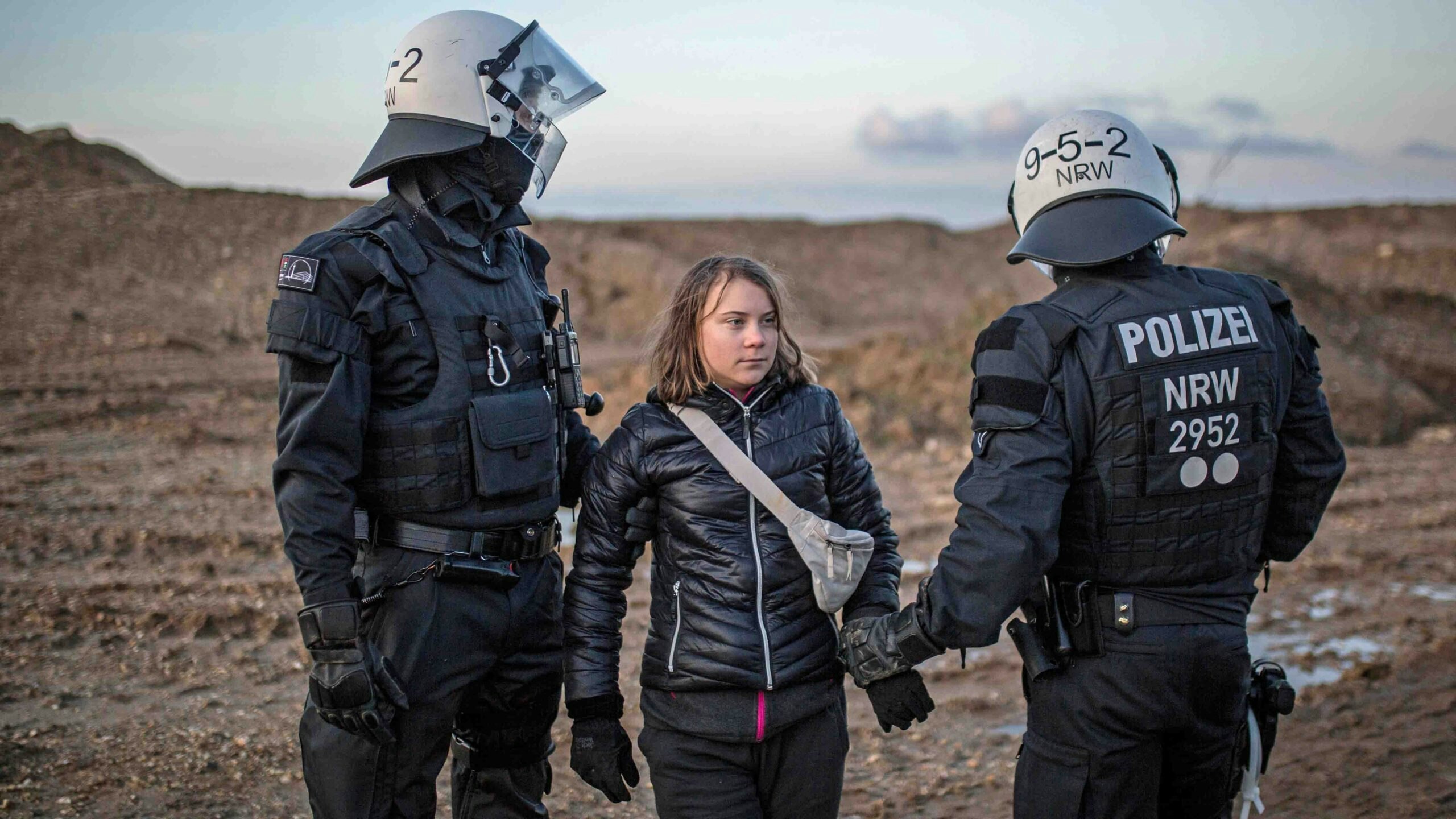Climate activist Greta Thunberg has become world famous for protesting the use of fossil fuels and warning everyone that a great catastrophe will come if we don’t replace them with wind and solar. Now the Swedish activist is protesting a wind farm in Norway.
Thunberg, 20, chained herself to the front entrance of the Norway Ministry of Energy on Monday to protest wind turbines that were built where an indigenous group of people called the Sami herd reindeer. Dozens of other climate activists calling for a transition away from fossil fuels protested with Thunberg, who said the transition cannot come at the expense of indigenous rights.
“There’s no shortage of irony here that the world’s most famous climate activist is now protesting against one of the alleged solutions to climate change,” energy expert Robert Bryce told Cowboy State Daily.
12 Wind Projects
Anne Brande, executive director of the Albany County Conservancy based in Laramie, told Cowboy State Daily she understands the activists’ concerns because the same problems are happening here in Wyoming. Members of the conservancy are very concerned about impacts to wildlife and historic sites in Wyoming.
Brande said there are currently 12 wind projects in development in Wyoming.
“It’s disgusting, and these companies don’t care,” Brande said.
According to U.S. Fish and Wildlife estimates, the Two Rivers project, Brande said, will impact nearly a third of the golden eagle population.
“It’s a continental project because we’re seeing them come from Mexico to Canada,” Brande said.
Mitigating Impacts
BlueEarth Renewables, which is developing the Two Rivers Wind Project, told Cowboy State Daily earlier this month that the company has been working with the U.S. Fish and Wildlife, as well as the Bureau of Land Management, on the layout and design of the project to mitigate the impacts to eagle populations in the region.
A spokesperson for the company said these efforts will continue throughout the life of the project, and be modified where improvements can be made.
Duke Energy, which operates the Top of the World wind farm in Converse County, is using a detection system that stops blades when birds are on a trajectory to fly into the blades. PacifiCorp, which operates several wind farms in Wyoming, is also incorporating the technology into its wind farms.
‘It’s Crazy’
Steve Milloy, an adjunct analyst with Competitive Enterprise Institute who served on the EPA transition team for the Trump administration, told Cowboy State Daily the impacts of wind energy to wildlife are going to become more apparent as more projects are built.
Milloy cites an article in the Feb. 28 edition of the New York Times about the 23rd whale that washed up on an East Coast shore. The article contemplates a number of possible causes, including prop strikes from ships, but offshore wind farms are also considered a possible cause.
The last paragraph in the article is by a climate activist acknowledging that using wind energy to mitigate climate change may come with tradeoffs.
“Greta has said she thinks the world is going to end … but we can’t put windmills on in Norway because the reindeer herders are going to be disturbed somehow. It’s crazy. They say whatever they need to say at the moment,” Milloy said.
Not Space Efficient
Brande said she recently went on vacation in Norway, where her husband, who is descended from Norwegians, did a family tracing expedition. She said she saw signs Norwegian farmers had put up in their meadows protesting the impacts of wind energy.
She said that despite all the open area Wyoming has, the number of wind projects going up is going to eventually leave little unimpacted area in the state.
“You can’t build out wind to solve everybody’s energy dilemma. It’s not space efficient,” Brande said.
With federal funding supporting the construction of new wind projects, Brande said, the projects will keep coming – and a lot faster.
Human Atrocities
Ron Stein, co-author of the Pulitzer prize nominated book “Clean Energy Exploitations” and policy advisor for energy literacy for the Heartland Institute, told Cowboy State Daily that the concern over impacts to indigenous people in western Europe is hypocritical. Many of the minerals used in electric car batteries, wind turbines, and solar panels, such as lithium and cobalt, are being mined in developing countries with little environmental or labor regulations.
The Democratic Republic of Congo, for example, supplies 70% of the world’s cobalt. Recent investigations by the New York Times, Vanity Fair, and the Guardian revealed miners in the country doing backbreaking labor in open-pit mines for less than a dollar a day.
“They’re encouraging human atrocities in developing countries,” Stein said.
Growing Rejections
Besides the area of land that wind and solar farms consume, there are massive amounts of transmission lines that will need to be constructed to transport energy from where it’s produced to where the demand is.
By some estimates the U.S. electric grid will need to grow by three to seven times its current size to create a reliable electrical supply, as more coal- and natural gas-fired power plants are taken offline.
Bryce keeps a Renewable Rejection Database of the number of wind and solar projects rejected in the United States. The numbers are growing. Bryce said the only thing different with the protest in Norway from hundreds of examples in the U.S. is that Greta Thunberg is involved.
He said that as the transition goes forward, if it goes forward, climate activists and environmentalists are going to have to come to grips with the impacts of renewable energy.
“This protest [in Norway] shows again that the incurable problem with wind energy is that it requires vast amounts of land. And that cannot be changed,” Bryce said.





